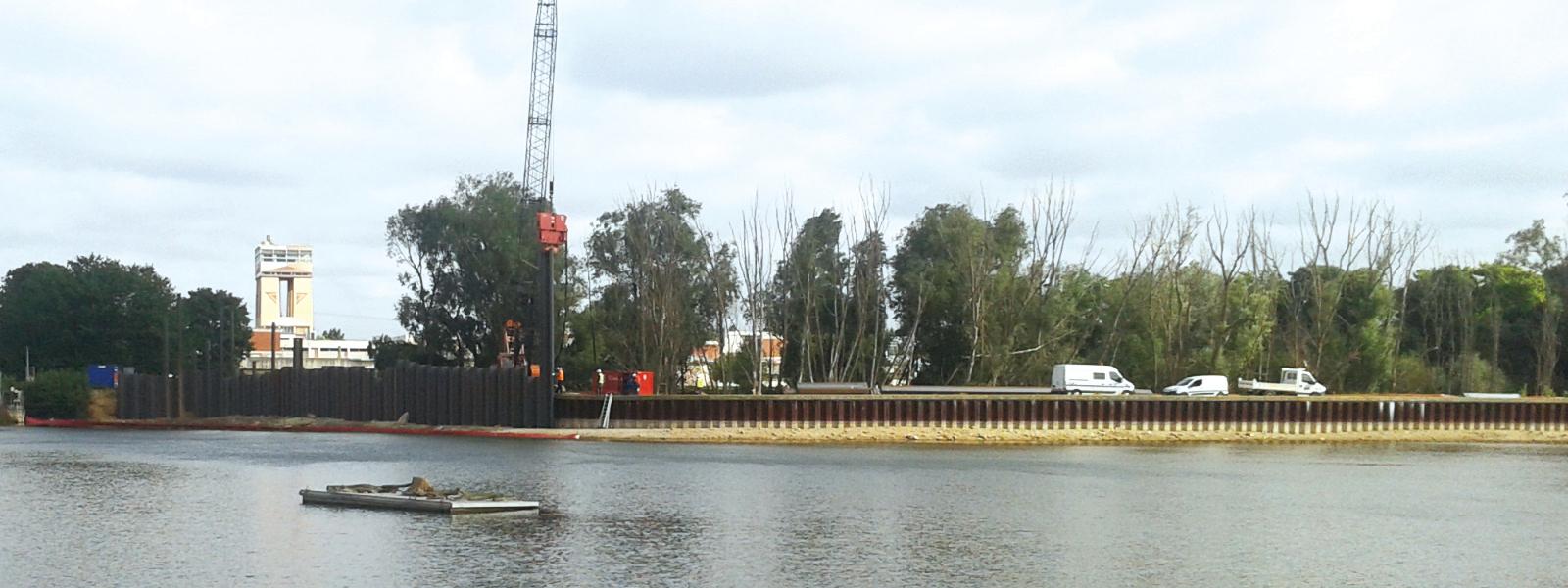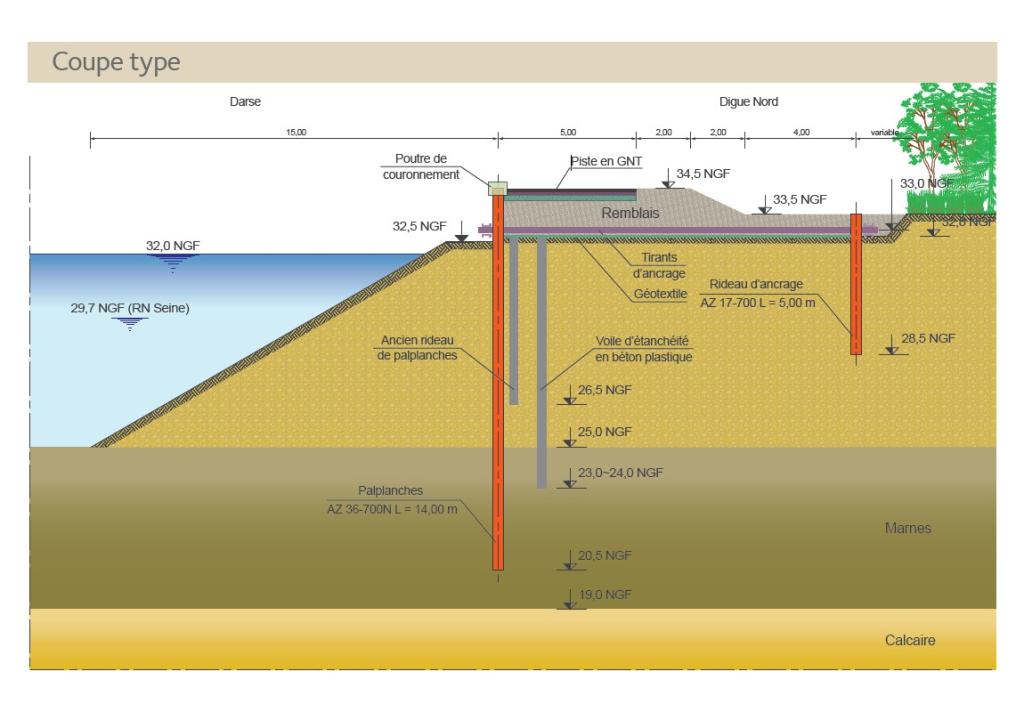Dyke reinforcement of the drinking water plant, FR | 2012
Protecting Paris against flooding by strengthening the dock dyke
EAU DE PARIS has been providing water to Paris for over 20 years from groundwater and river water taken from the Marne and the Seine before being treated. In 1961, the Paris city council decided to build a new surface water treatment plant to cope with the constant increase in drinking water demand.
Inaugurated in 1969, the facility occupies 52 hectares on the banks of the Seine on the site of an old ballast pit. The originally flood-prone land was filled, except for the basins which, covering over 5 hectares, form a dock with a capacity of 300,000 m3 of water, providing the plant with 24-hour autonomy at full capacity in case of river contamination.
Download
 French
French





